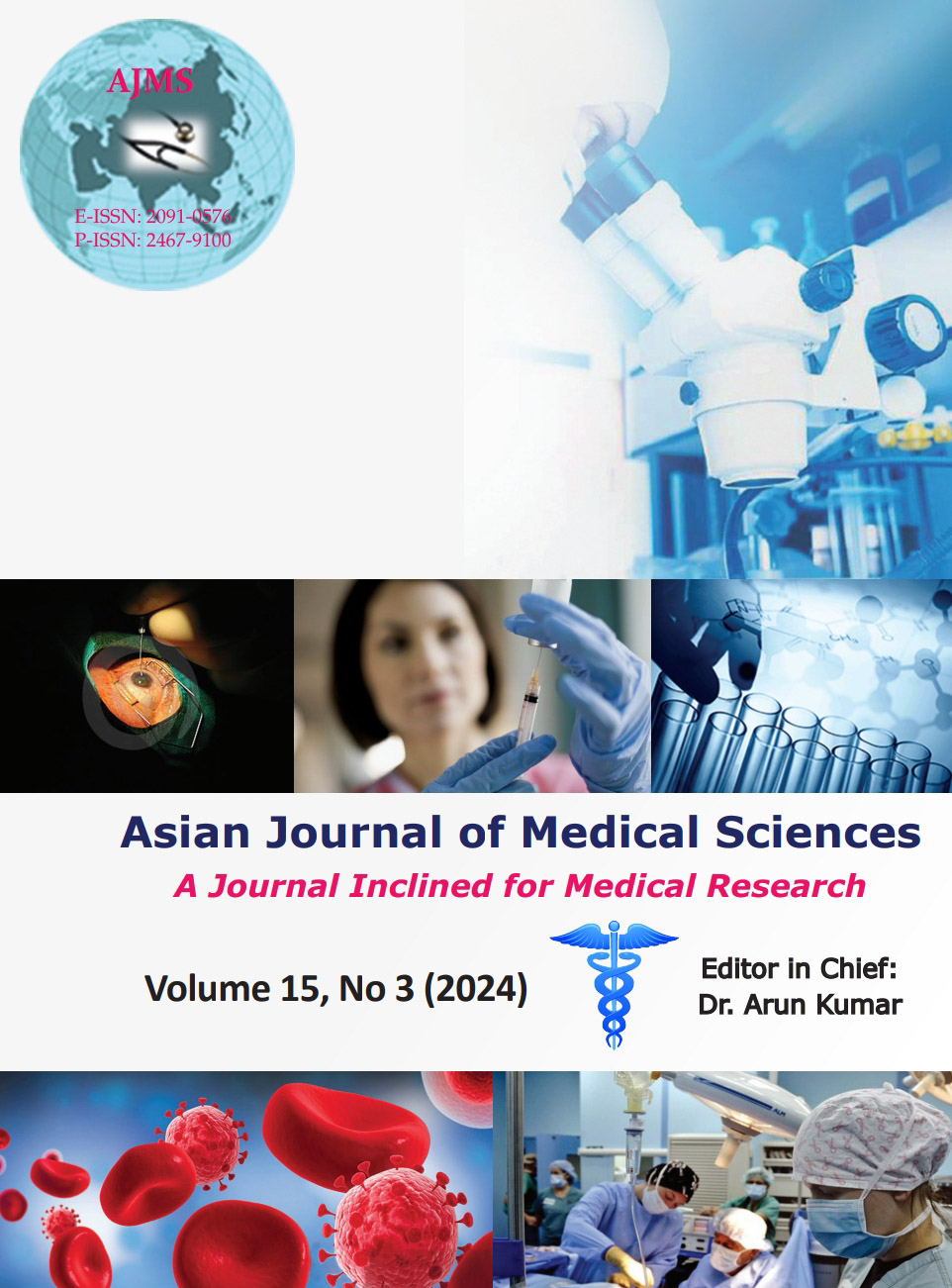Antishivering effect of intrathecal versus intravenous tramadol in patients undergoing urethroscopic lithotripsy under spinal anesthesia
Keywords:
Intrathecal tramadol; Shivering; Spinal anesthesia; Urethroscopic lithotripsyAbstract
Background: Shivering is the most common complication seen in the perioperative period in patients undergoing urological surgeries under spinal anesthesia. Intravenous tramadol is used for the treatment of shivering.
Aims and Objectives: In this study, we wanted to assess the prophylactic effect of tramadol, intrathecal (IT) versus intravenous with the control group, in decreasing the incidence of shivering.
Materials and Methods: Fifty-four eligible patients posted for urethroscopic lithotripsy (URSL) were randomly allocated into three equal groups – Group C: Received 2.5 mL 0.5% bupivacaine heavy + 0.5 mL normal saline intrathecally and 5 mL of normal saline intravenously, Group V: Received 2.5 mL of 0.5% bupivacaine heavy+0.5 mL normal saline intrathecally and 25 mg tramadol in 5 mL of normal saline intravenously, and Group T: Received 2.5 mL of 0.5% bupivacaine heavy + 25 mg (0.5 mL) of tramadol intrathecally and 5 mL of normal saline intravenously. The incidence and severity of shivering were noted. Onset of sensory and motor block, duration of post-operative analgesia, core body temperature, and adverse effects such as nausea, vomiting, and hypotension were noted.
Results: The incidence of intraoperative shivering was significantly lower in Group T versus C (P=0.014) but comparable among Group I versus C (P=0.502) and Group T versus I (P=0.06). The duration of analgesia was significantly higher in Group T compared to Groups I and C (P<0.001). The additional tramadol requirement was significantly lower in Group T versus I and in Group T versus C but comparable among Group I versus C.
Conclusion: The addition of 25 mg tramadol to IT 0.5% bupivacaine heavy is effective in preventing intraoperative shivering in patients undergoing urological surgeries like URSL.
Downloads
Downloads
Published
How to Cite
Issue
Section
License
Copyright (c) 2024 Asian Journal of Medical Sciences

This work is licensed under a Creative Commons Attribution-NonCommercial 4.0 International License.
Authors who publish with this journal agree to the following terms:
- The journal holds copyright and publishes the work under a Creative Commons CC-BY-NC license that permits use, distribution and reprduction in any medium, provided the original work is properly cited and is not used for commercial purposes. The journal should be recognised as the original publisher of this work.
- Authors are able to enter into separate, additional contractual arrangements for the non-exclusive distribution of the journal's published version of the work (e.g., post it to an institutional repository or publish it in a book), with an acknowledgement of its initial publication in this journal.
- Authors are permitted and encouraged to post their work online (e.g., in institutional repositories or on their website) prior to and during the submission process, as it can lead to productive exchanges, as well as earlier and greater citation of published work (See The Effect of Open Access).




